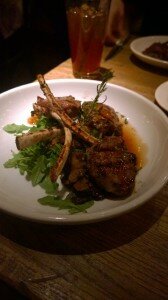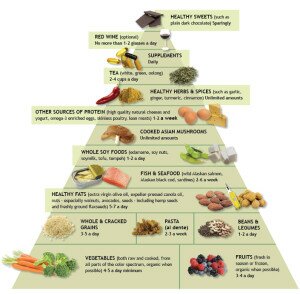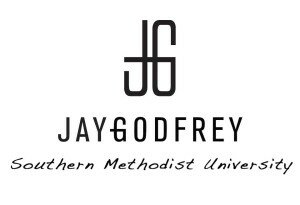by Naomi Bowen

photo taken at HG Sply Co. in Dallas
Over the past year, Dallas restaurants have gone from highlighting trendy dishes like tacos and burgers to focusing on food that is both healthful and delicious.
While some restaurants have opened to meet the dictates of specific diets like The Paleo Diet and anti-inflammatory diets, many mainstream restaurants are also adapting their current menus to include more healthful options.
Notes Leslie Brenner, restaurant critic for The Dallas Morning News: “Even in ‘cheffy’ restaurants, you’re seeing way more vegetables on the plates, way less butter, less heavy stuff. There’s been a big change in the dining scene in general, not just when a restaurant sells themselves that way.”
Many major chains like Applebee’s and Chili’s are also displaying lower-calorie options, to allow people the option of eating healthy.
According to the Centers for Disease Control and Prevention, obesity in Texas has dropped 2.5 percent since 2011. Brenner says she thinks health-focused restaurants, like True Food Kitchen and HG Sply Co., show a change in how people are living and eating. “If you go to both of these restaurants, they’re always packed. I think there’s a tremendous hunger for food that’s more healthful in Dallas,” Brenner says.
True Food Kitchen, the new Dallas hot spot that caters to the anti-inflammatory diet, has been consistently packed since it opened in Preston Center last November. Physician Andrew Weil, the founder of the diet, helped create the menu for this chain, which started in Colorado and also has a popular branch in Los Angeles.
 The anti-inflammatory diet focuses on creating balanced nutrition — based on scientific knowledge of how specific foods help your body maintain optimum health — not just losing weight. “I think that we are catching up in Dallas with other parts of the country. Dallas is not the only place catching up, a lot of the heartland and the South are catching up, too,” Brenner says.
The anti-inflammatory diet focuses on creating balanced nutrition — based on scientific knowledge of how specific foods help your body maintain optimum health — not just losing weight. “I think that we are catching up in Dallas with other parts of the country. Dallas is not the only place catching up, a lot of the heartland and the South are catching up, too,” Brenner says.
Rachel Fine, a certified personal trainer who provides dietary guidance, says she follows the anti-inflammatory diet and encourages her clients to as well. “I already ate this way before I learned about it, which I think goes to show how much it just makes sense,” Fine says. “The main things to avoid are refined sugar, flour, starches, full fat dairy, and red/fatty meat. It’s not that hard, and it has a lot of healthy benefits beside weight loss like healthier skin, joints, and internal organs.”
In contrast, the Paleo Diet is built around “eating like a caveman” and getting your energy from meat. The diet excludes all grains, dairy, refined sugar, potatoes, beans, salt, and processed foods. According to founder Loren Cordain, the Paleo Diet allows for three non-Paleo meals a week.
Health care professionals, however, are not sure how healthful this diet actually is. “The diet requires you to get your protein from meat, and guys always love an excuse to eat red meat, which is not good for the heart,” Fine says. “Cavemen did not eat every day. Everyone I have ever met who did the Paleo Diet eats every day.”
SMU senior Brianna McIntyre, who has been on and off the Paleo Diet for the past three years at varying intensities, said she felt her energy go up once she cut out grains, sugar, and high-fat dairy. “The longer I was on it the clearer my head felt,” Mcintyre says. “The mental fog was gone, and I didn’t feel drained or tired.”
McIntyre says her motivation to go on The Paleo Diet was not about weight loss but simply a desire to eat better. “I started snacking on nuts during the day, and I actually gained weight when I was being really strict Paleo,” Mcintyre says.
Brenner thinks that once people adopt these diets that advocate for moderation and a focus on fresh produce they’ll stick with them. “If you’re eating a certain way at home and you go to a restaurant and you’re clobbered with meat and cheese and starch, it just doesn’t feel good,” Brenner says. “This isn’t trendy. People are getting smarter about what they eat.”
 I’m not sure about you, but my hair is a piece of work. I was not one of those lucky girls who was blessed with perfectly natural straight hair or one that wakes up and the natural waviness is perfection. Nope, for me it’s as follows: a long, thick, dirty blonde (usually dirty) wavy mess. No matter what, it’s tangled and it’s very scary to put a brush through-so I usually don’t. Yes, this could be laziness or simply fear of pulling out half of my mane, but when it comes to styling this mess, I have a few pointers for what to do/NOT do if your hair is some kind-of-crazy like mine.
I’m not sure about you, but my hair is a piece of work. I was not one of those lucky girls who was blessed with perfectly natural straight hair or one that wakes up and the natural waviness is perfection. Nope, for me it’s as follows: a long, thick, dirty blonde (usually dirty) wavy mess. No matter what, it’s tangled and it’s very scary to put a brush through-so I usually don’t. Yes, this could be laziness or simply fear of pulling out half of my mane, but when it comes to styling this mess, I have a few pointers for what to do/NOT do if your hair is some kind-of-crazy like mine.












 The anti-inflammatory diet focuses on creating balanced nutrition — based on scientific knowledge of how specific foods help your body maintain optimum health — not just losing weight. “I think that we are catching up in Dallas with other parts of the country. Dallas is not the only place catching up, a lot of the heartland and the South are catching up, too,” Brenner says.
The anti-inflammatory diet focuses on creating balanced nutrition — based on scientific knowledge of how specific foods help your body maintain optimum health — not just losing weight. “I think that we are catching up in Dallas with other parts of the country. Dallas is not the only place catching up, a lot of the heartland and the South are catching up, too,” Brenner says.

 Another way brands promote their lines is through contests.
Another way brands promote their lines is through contests.  Another company that has a unique presence on campuses is
Another company that has a unique presence on campuses is 





